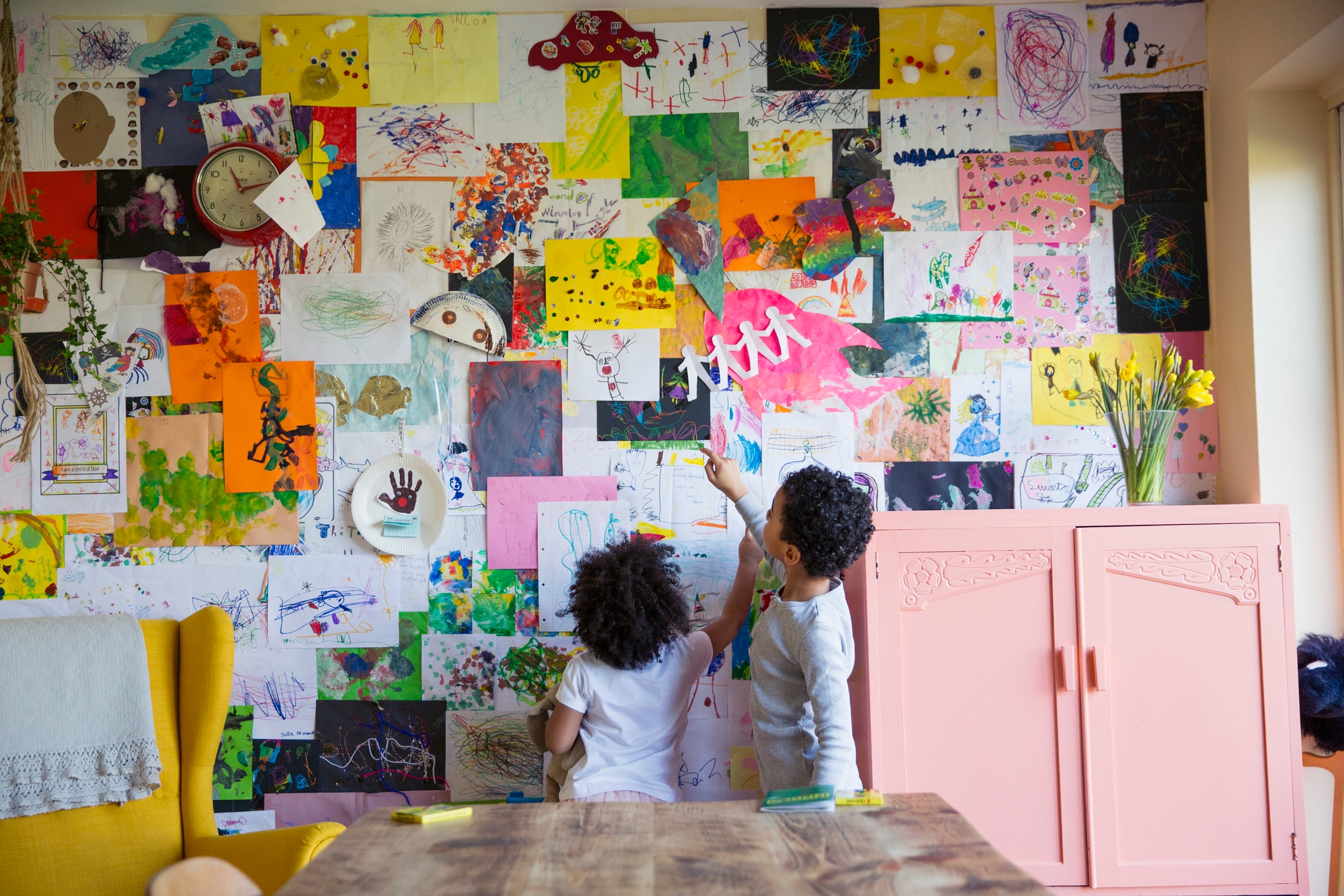Toddler tantrums are the stuff of legends — or nightmares, to be more accurate. It’s not uncommon for parents to live in fear of their child’s next meltdown. But there might be more to this dreaded behavior than it seems.
“Tantrums are normal, and parents shouldn’t feel as if they’re doing something wrong,” Ellen Braaten, a doctor of psychology, licensed psychologist and associate professor at Harvard Medical School tells Care. “They are teachable moments where you can help your child learn what to do when feeling overwhelmed.”
There’s a big misconception that tantrums are a reflection of poor parenting, points out Braaten. “That’s not the case,” she says, explaining that tantrums occur as a result of a child struggling to tolerate frustration in a particular situation.
Here, what you need to know about what exactly triggers toddler tantrums — as well as the best ways to deal with them, according to Braaten and other experts.
What causes tantrums?
A few of the must-knows behind why your toddler is having a meltdown:
They haven’t developed to the point where they can regulate emotions as we do.
“Put most simply, toddlers’ brains have not yet developed the capacity to regulate emotions that accompany stress reactions,” says Rebecca Schrag Hershberg, a doctor of psychology, psychologist and parenting coach. “They are not developmentally capable of managing their feelings, curbing their impulsivity, or having ‘good’ manners in the context of situations/circumstances that are stressful for them.”
These situations wouldn’t be stressful for grown-ups or older children, she adds, but toddlers haven’t yet amassed enough life experience to have everyday disappointments not trigger a stress response.
“Tantrums occur because a child wants to communicate something and their verbal skills aren’t at a level that allows them to describe what they need.”
— ELLEN BRAATEN, LICENSED PSYCHOLOGIST AND ASSOCIATE PROFESSOR AT HARVARD MEDICAL SCHOOL
They’re experiencing a normal part of development.
Tantrums are most common for children between the ages of 1 and 4 and peak at around age 2. And they most often occur because kids are learning about the world around them and new skills (walking, talking, getting themselves dressed) that allow them to become more independent, says Braaten.
Pediatrician Dr. Cherilyn Cecchini agrees, adding, “They are how a child learns self-control. A child who is trying to express an idea, test rules or limits or simply express emotion like hunger may do so by throwing a tantrum.”
Braaten adds, “Tantrums occur because a child wants to communicate something and their verbal skills aren’t at a level that allows them to describe what they need. They don’t have the words, but they do have the ability to cry, scream and cause a scene to get their point across.”
In short, a toddler’s newly found independence is a good thing, but it also leads to frustration, explains Braaten. “They learn to walk and want to run into the street,” she says. “When an adult stops them, they might throw a tantrum because something they wanted isn’t possible.”
And some tantrums occur because young children have difficulty with transitions, explains Braaten. For example, you’re setting a boundary with bedtime, and they’re having trouble getting accustomed to it.
What do parents need to understand to handle toddler tantrums?
The more you know, the better equipped you are to deal with your kid’s behavior.
Your child is not being manipulative.
Even though it feels like your toddler is running the show when they’re mid-tantrum, it’s also important to remember that tantrums are not a child’s way of manipulating the situation, says Checchini.
“They are not bad or spoiled and their behavior is not a reflection of your parenting,” she emphasizes. “A child who throws a tantrum is simply developing as they should, and it doesn’t mean that they have a parent or parents who are softies or lazy.”
They need tools to cope.
It’s also important to remember that you don’t necessarily have to suffer through this part of development, says pediatrician Dr. Florencia Segura.
“Most parents don’t know that you can teach a toddler self-calming techniques (when they are not in a tantrum), which will help kids move through tantrums quicker,” she notes. For example, you might help them calm down by:
- Taking deep breaths.
- Counting backward.
- Reading books about emotions.
Also, pay attention to how you react when you’re upset and how you calm yourself down, as modeling healthy techniques is another powerful tool to help children move through the tantrum phase, says Segura.
“Situational triggers include hunger or fatigue. These can be easily identified and addressed: for example, having snacks readily available or taking a moment to rest.”
— DR. FLORENCIA SEGURA, A PEDIATRICIAN
It can help to build awareness around your child’s tantrum triggers.
“Situational triggers include hunger or fatigue,” says Segura. “These can be easily identified and addressed: for example, having snacks readily available or taking a moment to rest.”
On the other hand, social triggers include not getting his way or being told no, says Segura. In the case of these triggers, she adds, your best bet is to prepare for these scenarios when they are calm, for example, by practicing turn taking or reading books about sharing.
“Both of my kids are neurodivergent, so tantrum triggers are most often based on sensory sensitivities, routine disruptions or something not meeting their expectations,” says Ashley Z., a Raleigh, North Carolina-based mother of Eva, 5, and Indy, 3.
Ashley gives the example of her 3-year-old wanting to wear her Bluey pajamas when they’re in the washing machine as a common trigger in her house.
“We try to manage expectations and minimize triggers in general as much as possible,” Ashley adds. “When they happen, though, we usually validate feelings and let them express themselves as needed. However, if they are kicking, hitting, etc. we let them know we are going to walk away and tell them to come get us when they’re ready. Most of the time they come running immediately after us but every now and then they take the space to calm down.”
What’s the best way to react to a toddler tantrum?
Keep your cool.
The best way to handle a tantrum is to stay regulated yourself, says Hershberg.
That way, toddlers can co-regulate — meaning that their stressed out nervous systems can pick up on our calm, warmth and stability and use those cues to come back into regulation themselves, she explains.
“When a child having a tantrum sees that a grown-up isn’t thrown off by it, that a grown-up is calm, compassionate, and unfazed, then that toddler learns that what they are experiencing — big, overwhelming feelings — is not unsafe,” points out Hershberg.
What you definitely don’t want to do: Meet your toddler with anger, anxiety, “fixing” or some other intense energy that will communicate to their nervous system that there is, in fact, cause for alarm, she explains.
Try ignoring – or empathy.
Segura shares that child psychologists generally see two specific ways to deal with tantrums: ignore the tantrum but remain physically present or respond with empathy (by sitting next to your child and offering a hug while they scream or cry).
Which one you choose depends on the situation, the parent, and the child.
Using the first technique, the trick is to ignore during the tantrum and remain neutral after. “The premise is that you try not to draw attention to the behavior and thereby reinforce it,” says Segura. This doesn’t mean you should actually leave the room and ignore your toddler; instead, stay with them and remain available, perhaps offering them help with another activity in a different part of the room.
The second technique is about offering empathy with a consistent behavior, like sitting with them or giving an overwhelmed child a hug. “You can also offer choices as a distraction while sitting with them. That might help them regain a sense of control and can lessen the tantrum,” says Segura.
How to deal with toddler tantrums
Figuring out how to handle toddler tantrums can feel like a behavioral minefield for parents, but there are ways to diffuse breakdowns and get things back on track.
Keep your child (and others) safe.
The best first step, according to Braaten, is to make sure there’s no risk of the child harming themselves, someone else or property.
“The proper response to this is to remove him quickly and calmly to someplace safer,” she says. This advice also applies when you’re in a public setting where a tantrum would be disruptive.
Braaten encourages parents to stay “matter-of-fact,” acknowledging that this is “very hard to do when you’ve got a kicking, screaming 2-year-old, but do whatever you can to get your child out quickly while staying unemotional yourself.”
Give your kid space.
When her 4-year-old son Jack is having a hard time, Atlanta-based mom Abi B. has learned to “give him space to have his feelings safely as long as I can.” She also works on calming techniques, such as “taking breaths, hugging a toy, drinking water, and doing a fidget pop thing,” she says.
Other tantrum-busting tips, according to the experts:
- Offer them a distraction. “Hey, look at this!”
- Give them choices. “How about you try this blue cup instead…”
- Acknowledge their frustrations. “I know you’re mad you can’t get another candy right now. Let’s look at this book together instead.”
- Take note of their feelings. For example, say, “You look scared/sad/worried/mad.” Braaten explains, “Labeling their feelings allows them to learn that next time they can say ‘I’m angry’ instead of screaming.”
- Ignore the tantrum. It shows your child that the tantrum won’t get her what she wants.
Dealing with toddler tantrums may be an unavoidable part of parenting, but that doesn’t mean they’re an impossible challenge. With some patience and a little luck, you’ll be able to navigate this phase with grace and humor.





